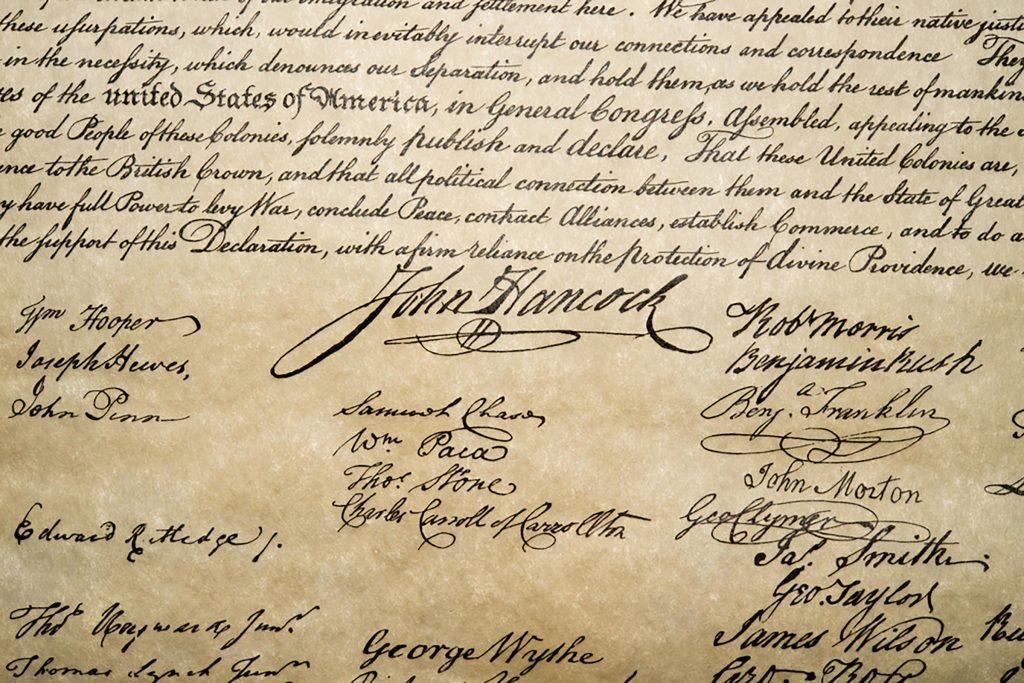Published genealogies covering the period before 1900 are common for a number of early settlers who had a lot of descendants. How many descendants can one couple have? Consider this. Generations grow exponentially. Imagine immigrant settlers John and Mary Smith, both born around 1610, come to New England in the 1630's and settle in Massachusetts. They have ten children, three of whom die in childhood. Out of the remaining seven, one does not marry, but the other six do. Each of those six children has ten children. Voila. John and Mary Smith have sixty grandchildren. Sound implausible? Not at all. Now imagine forty of those sixty grandchildren each having eight children. John and Mary Smith, by now dead, have 320 great grandchildren. Out of those 320, 250 have six children each. Now John and Mary Smith, whose gravestones by now are growing lichen, have 3,000 descendants. Keep doing the math and you will see how it grows. I'm generally 9 or 10 generations from my immigrant ancestors. Someone with better math skills can spin out the possibilities.
Another factor that will boost the number of descendants of one family is if the father was married more than once. Childbearing was a very risky enterprise for a woman in the colonial period. Death from complications after childbirth were common, from causes such as hemorrhaging or puerperal sepsis, when the placenta does not come out completely. It was common for a man to be married two or three times during his lifetime. If the second and subsequent wives were younger and of the age to have children, a man could be fathering children into his sixties. That creates another odd scenario, of shortening or lengthening generations. If someone is the youngest child of the second wife, the generation is longer. Compound this several times and a large gap, multigenerational in fact, will occur. I am in different generations descended from the same person. On the other hand, if a person is an early child, and that compounds itself, the generation is shorter.
Prime examples of couples with a huge number of descendants are some of the Mayflower settlers. John and Priscilla Alden are good examples. They have many tens of thousand descendants. So do John and Priscilla Howland, William Bradford, and William Brewster. Mayflower ancestry isn't an exclusive club, it's one in which a lot of people haven't realized yet that they are members.
So far I have found two Mayflower ancestors, Thomas Rogers, who died during the first winter, and Peter Browne. Through their mother my children are descended from four Mayflower passengers--one entire family. My wife is related to John Alden through his sister. I'm descended from the uncle of William Brewster. Undoubtedly some more will pop up. Right now I think my wife may have a Mayflower passenger but I'm still working on that.
My ancestry from all these English nobility, royalty, and such is just luck of the draw. Since the pool of people who came over from England is small, their own ancestry is magnified many times over. And, by then, they probably had no clue that they were descended from nobility, and probably couldn't care less.
Common pitfalls in researching New England genealogy include a general repetition of names, especially in any given family. I've seen lines in which the oldest son was named after his father, who in turn was named after his father. Finding a line in a family that has three or four Samuel Smiths in a row is common. Then there is the issue of children dying young, an unfortunate occurrence that was all too common. It was fairly common for the name of a child who died to be repeated the next time a child of the same sex was born. Having two children named John Brown, for instance, would not be common.
The problem of names being used a lot gets even more complicated. Suppose you have two cousins both named Samuel Heath. Each of them names their first son Samuel Heath. These cousins are six months apart in age. Which Samuel Heath do you go back to?
Common names for men included John, Samuel, Nathaniel, Jonathan, Israel, Josiah, Benjamin, and others. Common names for women included Mary, Elizabeth, Sarah, Deborah, Margaret, Hannah, and others. Occasionally women will have names such as Silence, Patience, Prudence, or some other virtue.
Occasionally you will come across someone who seems to have dropped out of the sky. One of my great great grandmothers is such a case. I can't find a trace of her family of origin. Nothing. All I know about her is that she was born around 1820 in New York state, and that she married my great great grandfather and raised a family. Another is an earlier ancestor, Samuel Sturdevant, who appeared in Plymouth, Massachusetts around 1645. His wife's name is uncertain, and nothing can be found about him--where he came from in England, whether he was born in Plymouth or in England. Those are dead ends, either permanent or temporary. I just discovered Sturdevant this week. I doubt anything will ever turn up on him. As for my great great grandmother, I've been on her trail for 30 years. I haven't given up yet.
I subscribe to Ancestry.com, which has made research much easier. Remember, though, that not everything you need is going to be online, and when you are looking at someone else's research do so with a critical eye, and don't take everything they put out as accurate. I have found much good research on Ancestry.com but I have also seen a lot of wishful thinking on the part of someone who wants to be descended from a famous person in history.
New England genealogy is an acquired taste, although it is very addictive. It is a great way to learn about history and the lives that people lived in various times in the past.









